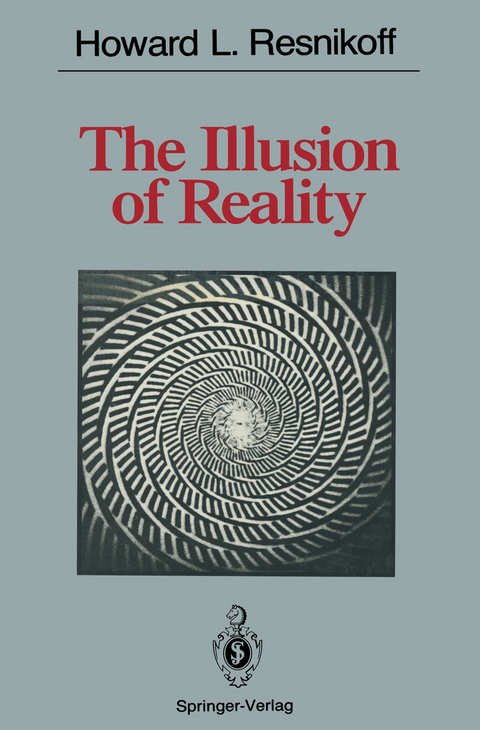
The Illusion of Reality
Springer-Verlag New York Inc.
978-1-4612-8115-3 (ISBN)
1 Introduction Purpose of This Book and History of the Subject.- 1.1 The Subject Matter of Information Science.- 1.2 History of Information Science.- 1.3 Information and Thermodynamics.- 1.4 Early Development of Sensory Physiology and Psychophysics.- 1.5 Selective Omission of Information.- 1.6 The Quantum Mechanical Theory of Measurement.- 1.7 Early Development of Electrical Communication Engineering and Its Formalization as Information Theory.- 1.8 The Development of Computers.- 1.9 The Information Processing Viewpoint in Psychology.- 1.10 Some Principles of Information Science.- 2 Mathematics of Information Measurement.- 2.1 Purpose of This Chapter.- 2.2 The Information Content of a Measurement.- 2.3 Formal Derivation of the Information Content of a Measurement.- 2.4 Application of the Information in a Measurement to Psychophysics.- 2.5 The Probability Interpretation of the Information Measure.- 2.6 The Uncertainty Principle for Measurement.- 2.7 Conservation of Information.- 2.8 Information Content of a Calculation.- 2.9 Generalization of the Notion of an Information Measure.- 2.10 Excursus on the Theory of Groups and Their Invariants.- CHAPTER3 Physical Measurements and Information.- 3.1 Purpose of This Chapter.- 3.2 The Uncertainty Principle of Heisenberg.- 3.3 Theory of Measurement and the Conservation of Information.- 3.4 Entropy and Information.- 3.5 Information, Energy, and Computation.- 3.6 The Physics of Information Processing.- 3.7 What Is Life?.- 3.8 The Theory of Measurement and Information.- 3.9 Time’s Arrow.- 3.10 Information Gain and Special Relativity.- 4 Principles of information-Processing Systems arid Signal Detection.- 4.1 Purpose of This Chapter.- 4.2 Hierarchical Organization of Information-Processing Systems.- 4.3 Extremal Systems and the Costof Information.- 4.4 Signals, Modulation, and Fourier Analysis.- 4.5 Shannon’s Sampling Theorem and the Uncertainty Relation.- 5 Biological Signal Detection and Information Processing.- 5.1 Purpose of This Chapter.- 5.2 Interconvertibility of Information Representations.- 5.3 Human Vision.- 5.4 Continuity of the Visual Manifold.- 5.5 Stabilized Vision.- 5.6 Information Content of Contours.- 5.7 Subjective Contours.- 5.8 Models of Human Color Perception.- 5.9 The Gaze as a Flying-Spot Scanner.- 5.10 Biological Echolocation Systems.- 5.11 A Catalog of Visual Illusions.- 5.12 Hierarchical Sampling Systems and the Duality between Noise and Aliasing.- 6 Pattern Structure and Learning.- 6.1 Purpose of This Chapter.- 6.2 Texture and Textons.- 6.3 Edge Detection, Uncertainty, and Hierarchy.- 6.4 Pattern Structure and Learning.- Biographical Sketches.- References.
| Zusatzinfo | X, 339 p. |
|---|---|
| Verlagsort | New York, NY |
| Sprache | englisch |
| Maße | 155 x 235 mm |
| Themenwelt | Schulbuch / Wörterbuch ► Lexikon / Chroniken |
| Informatik ► Grafik / Design ► Digitale Bildverarbeitung | |
| Informatik ► Theorie / Studium ► Künstliche Intelligenz / Robotik | |
| Sozialwissenschaften ► Kommunikation / Medien ► Buchhandel / Bibliothekswesen | |
| ISBN-10 | 1-4612-8115-6 / 1461281156 |
| ISBN-13 | 978-1-4612-8115-3 / 9781461281153 |
| Zustand | Neuware |
| Haben Sie eine Frage zum Produkt? |
aus dem Bereich


